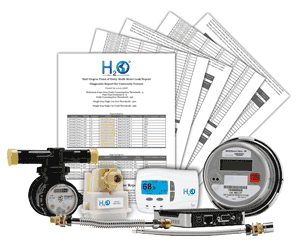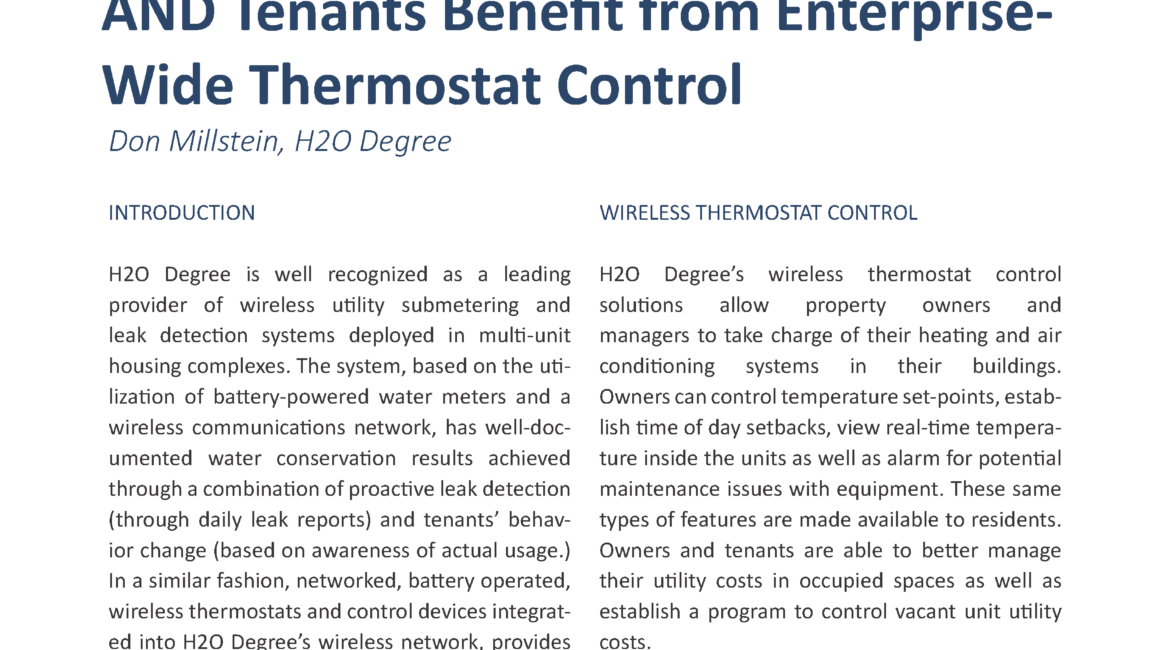
Apartment Owners/Managers AND Tenants Benefit from Enterprise-Wide Thermostat Control
By Don Millstein, H2O Degree
INTRODUCTION
WIRELESS THERMOSTAT CONTROL

THERMOSTAT CONTROL = ENERGY SAVINGS
H2O Degree's system utilizes a wireless network device (gateway) within the facility to transmit and gather data from each thermostat.
Both owners and tenants access thermostats via a password protected online portal or mobile app.
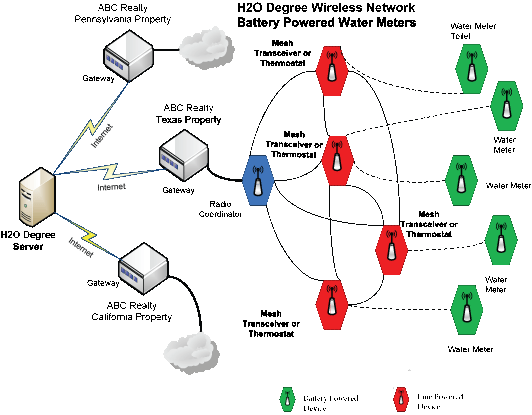
Wireless System Components
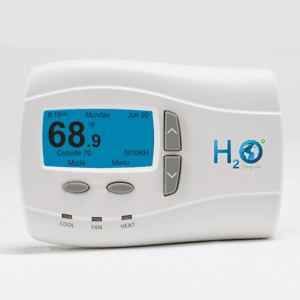
Measurements controlled and reported by the M5445x include: heat run-time, cool run-time, humidity, heat set-points, temperature and cool set-points. The device allows property managers to set units to vacant to conserve energy. The thermostat is 7-day programmable with night setback for increased energy savings. The unit has non-volatile memory to maintain the last reading in the event of a power failure.
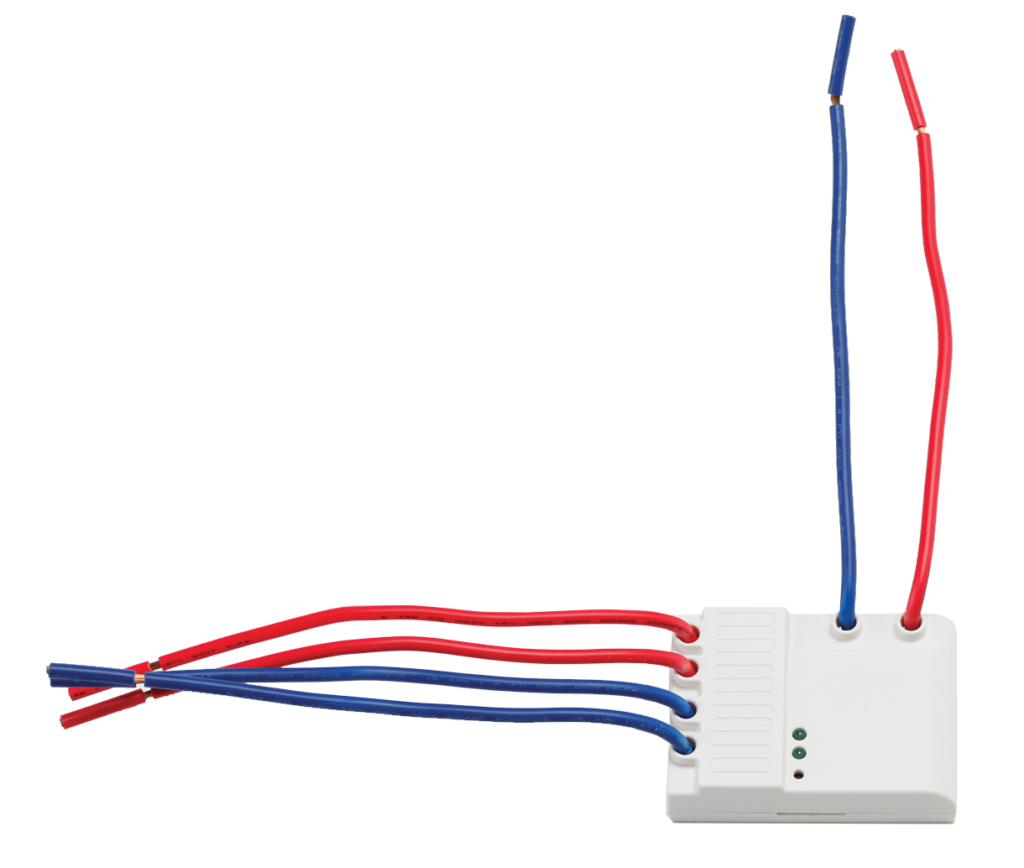
W54455-MIN RELAY MODULE
In many situations, the wireless thermostat is the only hardware required within the apartment to control heating. However, in installations where baseboard electric or hydronic heat is utilized, this relay module provides an effective labor reducing solution. The W54455-MIN relay module is a wireless network line powered node with an integrated relay and current detector packaged in an industry standard enclosure and capable of monitoring a load current up to 15A.
The module is available in either 120 VAC or 208-240 VAC configurations and features 3 small LEDs that help verify device status: Power, Link and Relay Status. Typical connection is shown in Figure 4.


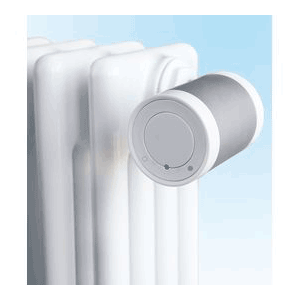
ENERGY HARVESTING HCV0104 WIRELESS RADIATOR ACTUATOR
The H2O Degree HCV0104 Wireless Radiator Actuator mounts directly onto thermostatic radiator valves where it controls the room temperature based on signals from the Wireless Thermostat fitted with an HCB0104 Thermostat Radiator Bridge. The wireless radiator actuator is radio-controlled and self-powered by harvesting heat energy from the hot water supplying the radiator. The wireless actuator does not require any cabling work nor does it consume batteries. It is designed for maintenance-free operation.
The wireless design makes the unit ideal for retrofit installation and cost sensitive projects where cabling cost is prohibitive. The HCV0104 contains a thermo-electric harvesting module and integral energy storage. Beyond this, it contains an electromechanical valve actuator, a radio module and a micro-controller that makes all parts of the system work together.
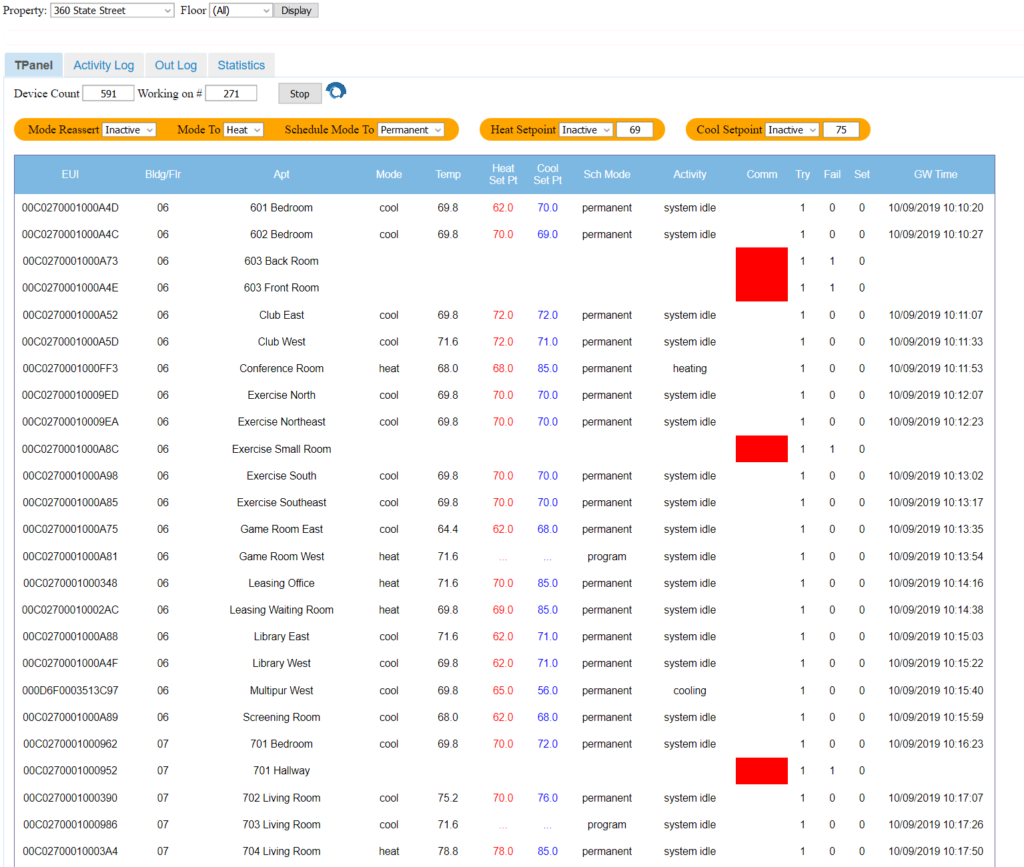
ENTERPRISE-WIDE SYSTEM UTILIZATION
Enterprise-wide monitoring and control of temperature in apartment units and in facility lobbies, meeting rooms, laundry and other common spaces is conducted by building management utilizing simple and convenient dashboard displays. These displays access real-time data downloaded from the H2O Degree cloud based server and provide command and control of the entire system. Figure 6 presents an example of the display for a large, multi-tenant facility that is employing H2O Degree wireless thermostats throughout the complex. This display allows building management to remotely set heating and cooling set-points, set limits on tenant ability to adjust the set-points, identify and reduce energy costs in unoccupied areas and identify problems. For example, the run-time data would identify a malfunction of the air conditioner (or perhaps an open patio door or window) in a space where the room temperature remains above the set-point for an extended period of time.
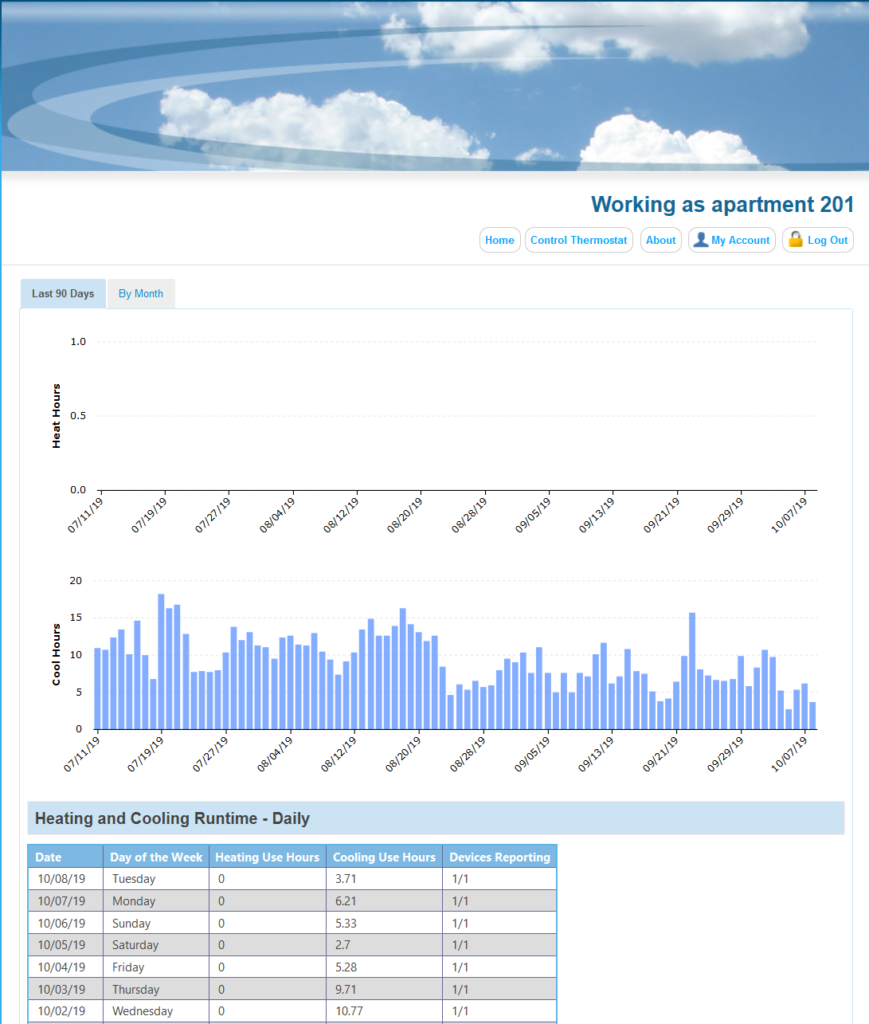
Figure 7 displays the information for a single zone (in this case, Apartment 201) in this facility. The graph shows no heating but air conditioning usage going from early summer to early fall. The display also shows the actual usage on a day-by-day basis for the prior seven days. The information is also available for each tenant to review.
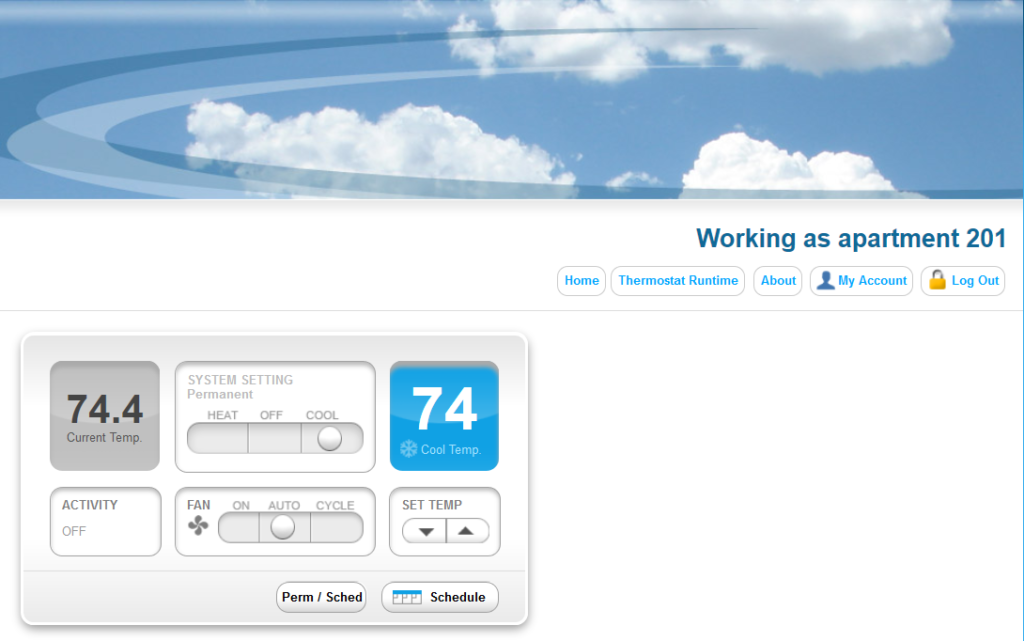
TENANT THERMOSTAT CONTROL
Each tenant has access to the thermostat display, as shown in Figure 8, via the internet on their computer or mobile device. This online display mirrors the actual functions and information available on the thermostat(s) in their unit. It enables each tenant to remotely control (within the limits set by the building management) the temperature in their environment.
CONCLUSION
Enterprise-wide thermostat systems provide building owners/managers as well as tenants another valuable tool enabling energy reduction and cost savings. Information provided by the intelligent system provide management with exceptional visibility and control over the property’s heating and air conditioning operations. And, as has been well documented with water submetering systems, tenant awareness of their usage leads to energy-reducing behavioral changes.
ABOUT H2O DEGREE
H2O Degree manufactures a broad line of wireless, radio-based submetering and leak detection systems that measure individual apartment or condo use of water, domestic hot water energy, boiler and chiller energy, electricity, gas and BTUs. The company also offers Green Thermostats, which track energy use and apartment temperature while allowing tenants and property owners to set temperature set-points and schedules, adjust set-back temperatures when tenants are away or asleep and report HVAC maintenance issues. For more information, please go to: www.h2odegree.com.
